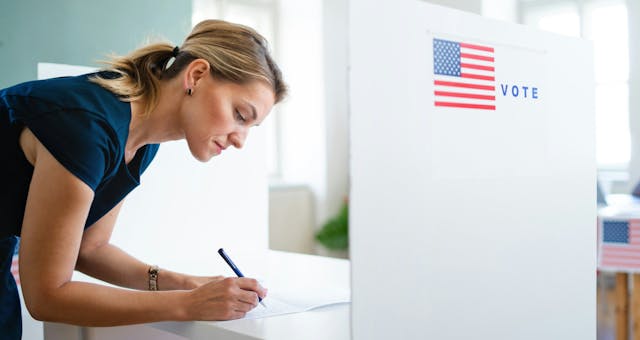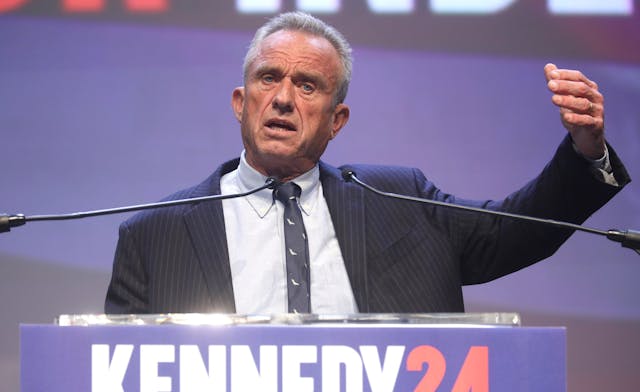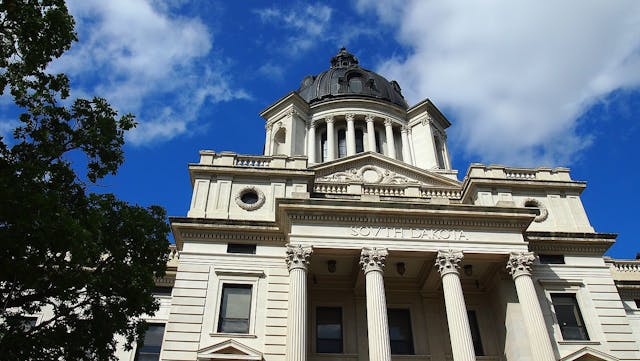The State That Defied America's Archaic Electoral Politics with a New Voting System

Author: Fair Vote
Democracy advocates recently celebrated a victory in Maine, where voters used ranked-choice voting in their statewide primaries — the first state ever to do so. In that election, voters also approved a referendum to keep the ranked-choice system for future elections. They will use it this November in the elections for U.S. Senate and U.S. House.ALSO READ: Independents Made the Difference in Maine’s Ranked Choice Voting
Advocates say this method of voting opens up the system to third parties and independents, and avoids the so-called “spoiler” effect of candidates who run outside of the two major parties. They say it also often introduces greater civility into the campaign.In ranked-choice voting (sometimes called instant-runoff voting), people vote not only for their first-choice candidate, but also rank their preferences for other candidates running for the same office. When votes are counted, if a candidate earns more than half of the first-choice rankings, then you have a winner, just like any other election. If not, then the last-place finisher is eliminated, and those votes are redistributed to those voters’ second-choice preferences. This process continues until one candidate obtains a majority.Rob Richie co-founded FairVote in 1992 to advocate reforms such as the one Maine has been using.Fran Korten: What is the significance of the victory in Maine?Rob Richie: It is really exciting and provides a window into a movement that is rapidly expanding into other cities and states. Ranked-choice voting has been used in the past year for elections for mayor in cities like San Francisco, Minneapolis, St. Paul, and Santa Fe, New Mexico. New York City may put it on this November’s ballot for voters to consider using for their primary elections. Utah just passed a bill that allows cities to use ranked-choice voting, which some will likely do in 2019. Massachusetts has a very strong movement heading toward putting it on the statewide ballot in 2020. We expect more states to take action by then.Korten: What was going on in Maine that prompted people to advocate ranked-choice voting?Richie: Maine’s last three governors all won with less than 40 percent of the vote in one of their elections. If votes are split among several candidates that means that someone can win the election that a majority of voters oppose. A group of civic activists in the state said, “Let’s do something about this.” Because Maine’s biggest city, Portland, used ranked-choice voting, they had a local model that they knew could work. They used the right of initiative to put a ranked-choice voting measure on the ballot in 2016. It won. But an adverse legal ruling affecting a couple of its uses gave some anti-reform incumbents reason to pass a bill that effectively repealed the initiative. That was the dark hour of October 2017. But Mainers, led by the Committee for Ranked Choice Voting, didn’t give up. They turned to their power to exercise a people’s veto. They collected enough signatures to suspend the repeal law while putting it up for a vote of the people.So on June 12, Mainers could do two things: vote with ranked-choice voting, and vote on whether to keep the system. They used ranked-choice voting for all their primaries, including crowded fields for both the Democratic and Republican races for governor. Voters came out in record numbers, ranked their candidates effectively, and then voted to keep ranked-choice voting in place for future primary and congressional elections. And so, through a lot of struggle, Maine voters won the system and will use it this November for U.S. Senate and U.S. House elections, with each race having multiple candidates.Korten: Does ranked-choice voting give more power to third parties?Richie: It gives more power to all voters, including those who want to support third parties. As a voter you are able to vote for your true choice enthusiastically without the usual castigation that you’re wasting your vote. Third parties are sometimes criticized as “spoilers” for their role in splitting the ballot. Some people will say Ralph Nader cost Al Gore the election in 2000. Or Jill Stein cost Hillary Clinton the election. Or Ross Perot cost George H. W. Bush. Under ranked-choice voting, you can vote for the candidate you want without helping to elect the one you like the least. And that means you can really have an opportunity for new ideas to be considered for their merits. So if there’s space for a third party to grow, it can grow. Australia has an average of seven candidates run for its house elections with ranked-choice voting, and no one finger-points about “spoilers.”Korten: What’s an example where ranked-choice voting made a difference in an election?Richie: In Minneapolis, a young, transgender African American man named Phillipe Cunningham ran for city council against a 20-year incumbent who was the city council president. As the only outspoken opponent of ranked-choice voting on the council, the incumbent didn’t embrace the system and ran a more traditional “vote for me” campaign against Cunningham and two other candidates. She led in the first round but fell short of a majority. Cunningham had reached out and engaged with backers of other candidates. When the third- and fourth-place finishers were defeated, their backers’ votes went heavily to Cunningham, who won with a majority. He says the ranked-choice voting system allows voices who might have been easily marginalized in the past to be part of the debate and treated respectfully.Korten: What other effects do you see ranked-choice voting having on elections?Richie: It rewards candidates who seek consensus. As a candidate, you want to be someone’s first choice. But there’s value in being the second or third choice of voters who back a different candidate. So you look for reasons to connect with more voters and understand what makes them tick. Successful candidates learn to walk right past the sign for their opponent in someone’s yard, knock on the door, and have a conversation with that voter because doing so might help them win by earning second-choice support.Maine and all six cities that used ranked-choice voting in the last year had unexpectedly high surges in turnout. Because the system accommodates having more candidates, those candidates then bring their voters with them. I think it’s inevitable that it’s going to boost participation as candidates embrace ranked-choice voting culture.Women have been doing particularly well with the system. It welcomes a candidate’s style who is trying to connect with more voters, and, at least in some contexts, women candidates seem to do that well. It also has helped people of color. In the Bay Area, where four jurisdictions elect 53 seats with ranked-choice voting, people of color have gone from winning two out of every five races before adoption of ranked-choice voting to three out of every five with the new system. The mayors in those four cities have gone from being all male to three women and a young Latino man.Korten: Why does ranked-choice voting result in greater diversity in winners?Richie: The cities using ranked-choice voting don’t have primaries. So all the voting happens in November. That means that all the candidates are on the ballot when most people vote and you have the most diverse electorate getting to consider the most diverse set of candidates. It also makes it less costly to run when the most rewards go to direct engagement with voters—attending neighborhood meetings and earning voters’ trust. Things that cost more money like television ads don’t seem to be as effective, particularly at this local level in ranked-choice voting elections.Korten: Who is against ranked-choice voting?Richie: Sometimes we’ll see opposition from incumbents or politically established people who feel the current system’s working just fine. They don’t want to upset the apple cart. There are others who are concerned about vote-counting procedures and that we don’t count even “single choice” ballots well. Fortunately, those concerns are being addressed by groups like the Ranked Choice Voting Resource Center that has good information about the best practices for counting ranked-choice voting. Finally, there are some people who prefer other new voting systems, although people are learning to get along better in the reform world and avoid getting in each other’s way.Korten: Could ranked-choice voting be used for a presidential election?Richie: Absolutely! We’re helping to form a coalition to call on states to use ranked-choice voting in 2020 for , which just takes a simple law change. So every time you hear, “Oh, third parties split the vote,” remember that state could use ranked-choice voting and settle that issue. States and parties might adopt it for presidential primaries and caucuses. Republicans had a big crowded field for president in 2016, and everyone expects Democrats to have a similarly large field in 2020. Ranked-choice voting would reward a candidate who can bring people together and give voters a chance to do more than indicate a single choice.Editor's Note: This article originally published on FairVote's blog, and has been modified slightly for publication on IVN.
Latest articles
Independent Voters Are Many Things -- A Myth Isn't One of Them
Open Primaries continued its ongoing virtual discussion series Tuesday with a conversation on independent voters, who they are, and why we have a system that actively suppresses their voices at every level of elections and government....
08 May, 2024
-
2 min read
RFK Jr Challenges Trump to Debate; Calls Out 'Fake Polls'
Independent presidential candidate Robert F Kennedy extended a challenge Tuesday to former President Donald Trump to debate him at the Libertarian National Convention at the end of May....
07 May, 2024
-
3 min read
South Dakota Open Primaries Submits 47K Signatures to Get Nonpartisan Primary Reform on the Ballot
One week after the Idahoans for Open Primaries coalition submitted roughly 30,000 more signatures than they needed to get a nonpartisan top-four primary system on the ballot, South Dakota Open Primaries met the required number of signatures in their own state to put a top-two system before voters....
07 May, 2024
-
4 min read


